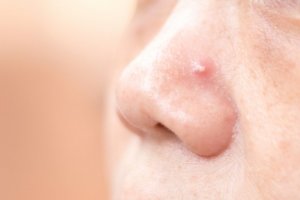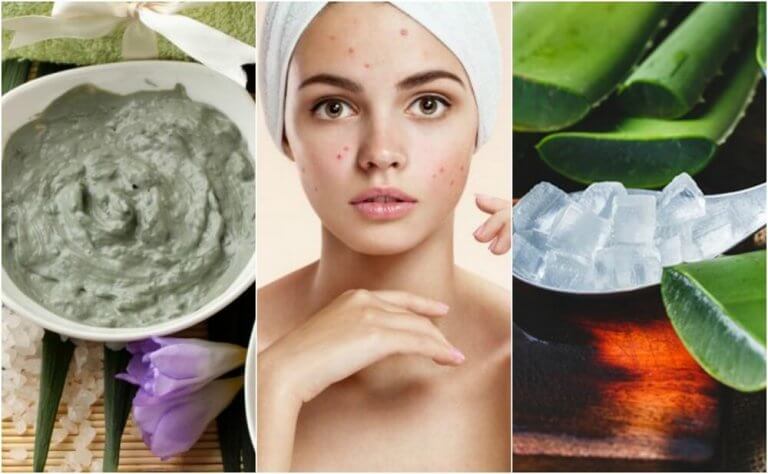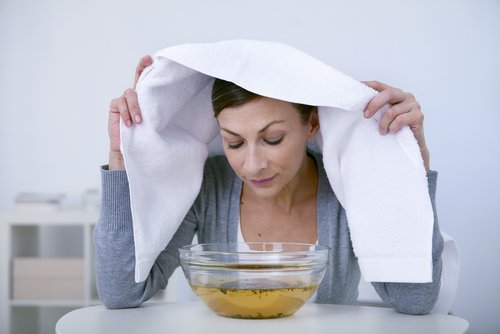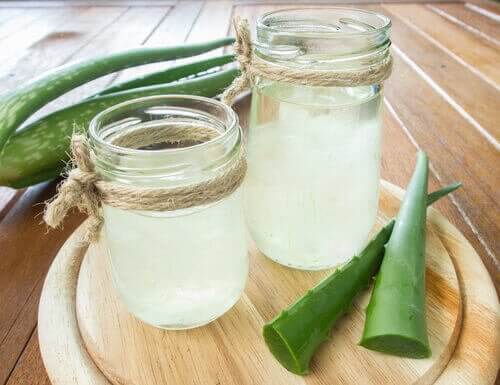Get Rid of Pimples on Your Nose with These 4 Homemade Remedies

Pimples on your nose are unsightly. Unfortunately, since they’re right there in the middle of your face, they’re very noticeable. According to a study from the San Carlos Clinical Hospital (HCSC), these pustular lesions can occur due to several, common causes. In addition, some people get them a lot and can’t find a natural way to get rid of them.
In this article, discover how to prevent and treat pimples on your nose with these simple, natural, homemade remedies. Try them out to get beautiful, flawless skin!
Why do you get pimples on your nose?
First of all, there are multiple reasons you might have pimples on your nose, as well as other skin conditions. Here are some influential factors:
- Eating poorly and bad habits
- Pollution
- Hormonal changes
- Improper facial hygiene
- Genetic factors, just as this study from the University of Zaragoza states. It associates certain types of dermatitis with a genetic predisposition to them.
You should also read: 5 Turmeric Masks for Acne Scars
Below, we share some remedies you can make at home. This way, you can include them in your personal beauty routine to prevent and eliminate pimples on your nose.

Natural home remedies
1. Rosemary chamomile facial steam
For starters, the first home remedy is good for clearing pimples on your nose by using a steam “bath”.
When you make a medicinal infusion and let it boil, the steam, according to this study, works as an antiseptic and disinfectant and facilitates the functions of the other two elements.
In addition, chamomile is anti-inflammatory, while rosemary can address pore infection, as it promotes skin healing.
With these two ingredients, you can make an effective facial steam you can use once a week.
Ingredients
- 5 cups of water (1 liter)
- 2 tablespoons of dry rosemary (30 g)
- 2 tablespoons of dry chamomile flower (30 g)
Instructions
- First of all, put the water on the stove and bring it to a boil and let the herbs simmer for five minutes.
- Remove from heat and lean your face over the water, about a foot away. Be careful not to burn yourself!
- Drape a towel over your head to keep the steam in place.
- Let the steam work its magic for two to five minutes.

2. Baking soda and coconut oil exfoliant
After opening up your pores with the steam bath, you’re in a great position to do a deep clean and exfoliation of your nose.
For this, we recommend combining baking soda, which is an antibacterial and according to a study published in the Cuban Magazine of General Medicine, it’s rough but also gentle enough on the nose and skin, with coconut oil. This oil is a great anti-inflammatory agent, according to several studies.
Ingredients
- 1 tablespoon of coconut oil (15 ml)
- 1 teaspoon of baking soda (3 g)
Instructions
- Mix the ingredients together until you make a paste.
- On damp skin, apply the paste to your nose and massage gently.
- If you wish, exfoliate your entire face.
- To finish, rinse off the exfoliant with water.
See also: 8 Steps for Eliminating Acne
3. Aloe vera and tea tree oil gel
If you want to moisturize your nose without making it oily, you can make a non-oily gel.
To do this, use aloe vera gel as a base, which will keep the moisture in, protect your skin, and help heal blemishes and acne. In addition, tea tree oil will help prevent pimples on your nose because it’s an antibacterial.
Ingredients
- 3 tablespoons of aloe vera gel (45 g)
- 6 drops of tea tree essential oil
Instructions
- Mix the ingredients together and store in an airtight container.
- Apply it to your face, avoiding making contact with your eyes.

4. Charcoal clay mask
If you want to get rid of the pimples on your nose, you need ingredients that will absorb and then remove dirt from your pores. Two natural detoxifiers that are perfect for the job due to their detox properties are charcoal and clay.
The clay will absorb toxins due to its mineral content. According to this study, charcoal is a powerful cleanser and absorbant. And thanks to its grainy texture, it also acts as an exfoliant. Together, they make an extraordinary anti-pimple mask.
Ingredients
- 1 tablespoon of green or white clay (15 g)
- 1 teaspoon of charcoal for cosmetic use (5 g)
- 3 tablespoons of water (45 ml)
Instructions
- First of all, mix the three ingredients but don’t use utensils or containers made out of plastic or metal. Use glass, ceramic, or wood containers.
- You should get a spreadable paste that’s not too wet or dry.
- Apply the mask to your nose and leave on 15 minutes or until dry.
- To finish, rinse off and moisturize your skin.
As you can see, these remedies are easy, inexpensive, and very natural. What are you waiting for to try them out?
All cited sources were thoroughly reviewed by our team to ensure their quality, reliability, currency, and validity. The bibliography of this article was considered reliable and of academic or scientific accuracy.
- Carson, C.F., Hammer, K.A. and Riley, T.V. Melaleuca alternifolia (Tea Tree) Oil: a Review of Antimicrobial and Other Medicinal Properties. Clinical Microbiology Reviews. 2006; 19(1): 50-62.
- Hajheydari Z, Saeedi M, Morteza-Semnani K, Soltani A. Effect of Aloe vera topical gel combined with tretinoin in treatment of mild and moderate acne vulgaris: a randomized, double-blind, prospective trial. J Dermatolog Treat. 2014 Apr;25(2):123-9.
- Pedraz J, López-Bran E. Protocolo diagnóstico de las lesiones pustulosas. Medicine – Programa de Formación Médica Continuada Acreditado. 2018; 12(48): 2877-2881.
- Querol Nasarre I.. Dermatitis atópica. Rev Pediatr Aten Primaria. 2009; 11(Suppl 17): 317-329.
- Rügge SD, Nielsen M, Jacobsen AS, Vang O, Jemec GB. Evidens for kamilleomslag [Evidence of dermatological effects of chamomile]. Ugeskr Laeger. 2010 Dec 13;172(50):3492-6.
- Sanchez N, Fayne R, Burroway B. Charcoal: An ancient material with a new face. Clin Dermatol. 2020 Mar-Apr;38(2):262-264.
- Schencke C, Vásquez B, Sandoval C, del Sol M. Rol of the Miel in the Morphophysiologic Process of the Reparation Wounds. Int. J. Morphol. 2016; 34(1): 385-395.
- Valenti DM, Silva J, Teodoro WR, Velosa AP, Mello SB. Effect of topical clay application on the synthesis of collagen in skin: an experimental study. Clin Exp Dermatol. 2012 Mar;37(2):164-8.
- Vara-Delgado A, et al. Uso de la manzanilla en el tratamiento de las enfermedades periodontales. AMC. 2019; 23(3): 403-414.
- Varma SR, Sivaprakasam TO, Arumugam I, Dilip N, Raghuraman M, Pavan KB, Rafiq M, Paramesh R. In vitro anti-inflammatory and skin protective properties of Virgin coconut oil. J Tradit Complement Med. 2018; 9(1):5-14.
- Verdolini R, Bugatti L, Filosa G, Mannello B, Lawlor F, Cerio RR. Old fashioned sodium bicarbonate baths for the treatment of psoriasis in the era of futuristic biologics: an old ally to be rescued. J Dermatolog Treat. 2005 Feb;16(1):26-30.
- Williams LB, Haydel SE. Evaluation of the medicinal use of clay minerals as antibacterial agents. Int Geol Rev. 2010 Jul 1;52(7/8):745-770.
- Yeom G, Yun DM, Kang YW, Kwon JS, Kang IO, Kim SY. Clinical efficacy of facial masks containing yoghurt and Opuntia humifusa Raf. (F-YOP). J Cosmet Sci. 2011 Sep-Oct;62(5):505-14.
This text is provided for informational purposes only and does not replace consultation with a professional. If in doubt, consult your specialist.








